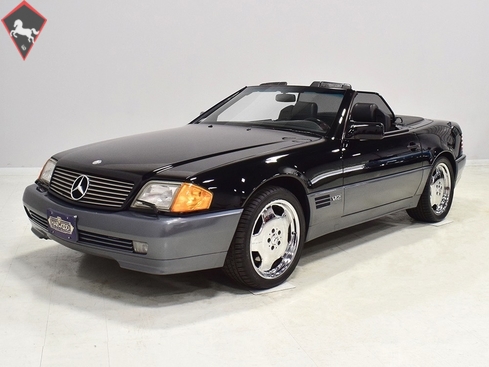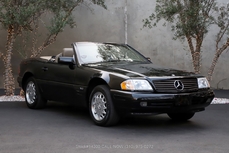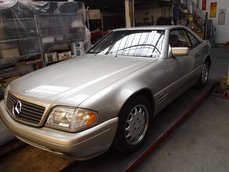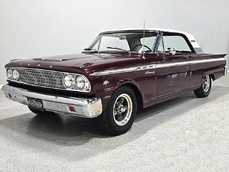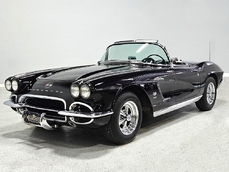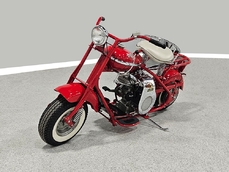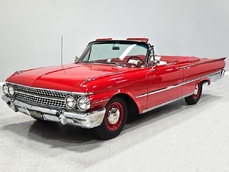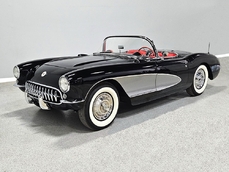Mercedes-Benz 600SL r129 6.0 liter V12 1994
General description :
In the late 1990s, when I was still working with a large Corvette tuner, we rented Waterford Hills Raceway in suburban Detroit for a day. While we were there, a NASCAR Craftsman truck team of some note was also on the track testing their latest hardware. It was fun to see how our Corvettes compared to a tube-chassis full-race machine. The track got a little busier when a writer from one of the big car magazines headquartered nearby showed up in an SL600 roadster just like this one. For fun, he took it out on the track and within a few short laps, was steadily closing the distance on the NASCAR truck. Eventually, the big, bad Benz stepped around the race truck and passed it on the front stretch, a Wagner aria blaring from the speakers just for effect, and the mighty V12 matching with its own baritone song. I’ve been playing with cars for nearly 40 years, and that is still one of the most memorable experiences I’ve ever had, right up there with blowing through a speed trap somewhere in Nebraska at better than 220 MPH. But that’s a story for another time.
What we’re talking about here is the world’s most civilized supercar. This stunning triple black 1994 Mercedes-Benz SL600 was the top of the line machine from the world’s most respected automaker, and shows just over 70,000 original miles today. All of the 1526 SL600s built in 1999 offered two-tone paint (except red cars), and it gives the sleek R129 shape an aggressive edge that makes it look long and sleek. Of course, in black, this Autobahn stormer looks absolutely sinister. For $135,000 dollars in 1994, you got some beautifully finished paint, with this one showing only minor signs of use, mostly limited to a few nicks on the nose. However, there’s just no mistaking the wide Mercedes grille and the famous three-pointed star in its center, and few cars are better at pushing slower traffic out of the fast lane than this. When you come hammering up on other drivers in this car, they tend to snap to attention and simply get out of the way before they’ve even had a chance to think about it. That’s PRESENCE.
Soft Nappa leather replaced the usual stiff perforated MB-Tex leather in the SL600, and the twin black buckets in this roadster are beautifully preserved with only light wear. In fact, there’s leather covering an awful lot of the interior, and while it doesn’t have the same upscale fragrance of, say, a vintage Jaguar, there’s definitely an aroma of quality materials. Virtually everything was standard equipment on the top-of-the-line SL600, including an upgraded entertainment system with a built-in cell phone, all of which probably seems quaint today. Lovely burled walnut warms up the business-like Mercedes interior, and you’ll probably want to spend an evening with the owner’s manual, because the vast array of gadgets, features, and buttons will have even the most brilliant cryptologist working overtime to decipher all the controls. There’s even an “MPG” gauge, which seems to be wired directly to your right foot—wiggle your big toe, and watch the gauge respond. Both seats are heated and powered, of course, and use the elegantly simple door-mounted seat controls. Overhead, there’s both a power black canvas convertible top and a removable hardtop, which seals the coupe up as tightly as any luxury sedan.
Although they appear the same on the outside, the SL600 differs from its less expensive siblings in one major way: more cylinders. And by more cylinders I mean 50-100% more! The silky smooth 6.0-liter V12 offers dual overhead cams and 48 valves, belting out 389 horsepower and enough torque to affect the earth’s rotation. Built in the days when the engineering department still ruled the Daimler-Benz organization and cost was no object, the engine is a bulletproof powerplant with a proven track record of running hundreds of thousands of miles with only routine maintenance. No finicky turbos, just major mechanical muscle hand-built to exacting standards. In typical Mercedes-Benz fashion, it’s quite content to motor around town with nary a whisper or vibration, and it does so happily now as the owner’s wife’s fair-weather toy. But plant your foot, as the NASCAR truck team discovered at the track that fateful day, and all twelve cylinders flex their muscle like a gathering storm. The instant rush of torque conspires to spin the rear tires, but the frantically flashing traction control light on the dash is your only clue. Moments later, you’re hurtling along with virtually zero physical indications of great speed aside from the speedometer reading and the landscape flashing by in a blur. And did I mention the sound it makes? You’ll feel it in your chest as much as hear it with your ears.
The SL600 uses a 4-speed automatic transmission, and with this much torque, extra gears are just superfluous. Like the engine, it makes seamless shifts when you’re commuting, but snaps off rifle-precise upshifts when the hammer is down, and eagerly drops down two gears when you bury the throttle in the deep pile carpeting to rocket around slower traffic. You will undoubtedly find yourself dipping into the car’s seemingly endless reserves of torque, savoring the sensation that feels much like being on the end of a massive recoiling rubber band. Fortunately, the adaptive damping suspension offers the control to match the horsepower, and the automatically adjustable ride height works as it should, hunkering the car down as speeds increase. There’s a massive disc brake at each corner, ably assisted by the best ABS and traction control systems available at the time. This SL also received gorgeous chrome AMG alloy wheels from the factory, measuring 18x8 up front and 18x9 in back—exotic footwear for 1994! Those gorgeous wheels are wearing a set of brand new 245/45/18 front and 75/35/18 rear Michelin Pilot radials that cost nearly $2000 and have fewer than 20 miles on them.
Vastly underrated, the SL600 is an everyday supercar. Even 25 years later, it remains an A-list celebrity and anywhere you go, people tend to notice the predatory black Mercedes silently cruising through traffic like an alpha predator. This one hails from the large collection of a well-regarded owner who is a fan of low mileage machinery, so its pedigree is known and it comes with a clean CarFax. If you’ve never owned a 12-cylinder motorcar, this may very well be the finest V12 ever made, and if you’re a Mercedes-Benz connoisseur, you already know what a special machine this is. Fast, rare, luxurious, and beautifully preserved, this is way more car than $20 grand should be allowed to buy.
Harwood Motors welcomes and encourages personal or professional inspections of any vehicle prior to purchase.
http://www.harwoodmotors.com/vehicles/inventory_details.php?id=1116
1994 Mercedes-Benz 600SL r129 6.0 liter V12 is listed sold on ClassicDigest in Macedonia by for $19900.
Car Facts
Car type : Car Make : Mercedes-Benz Model : 600SL r129 Model Version : 6.0 liter V12 Engine size : 6.0 Model Year : 1994 Location : Ohio
Sold
Seller Information
Sold
People who viewed this Mercedes-Benz 600SL r129 also viewed similar Mercedes-Benz listed at ClassicDigest
Other cars listed for sale by this dealer
About Mercedes-Benz
In the annals of automotive history, the journey of Mercedes-Benz is a tale that unfolds with the ingenuity of its founding pioneers. In the year 1886, Karl Benz crafted the Benz Patent Motorwagen, a creation that would go down in history as the world's inaugural automobile. Unbeknownst to him, this moment marked the genesis of what would evolve into the most illustrious premium car manufacturer globally. The financial underpinning of this pioneering venture, interestingly, was provided by Karl Benz's wife, Bertha Benz, demonstrating a remarkable partnership that would set the tone for Mercedes-Benz's legacy.A parallel narrative emerged not far away, as Daimler-Motoren-Gesellschaft, founded by Gottlieb Daimler and Wilhelm Maybach, entered the scene. In 1901, they unveiled their automobile under the now-famous moniker "Mercedes," meaning "godsend" in Spanish. This name was bestowed upon the car at the behest of Emil Jellinek's daughter, the distributor for Daimler-Motoren-Gesellschaft. The wheels of innovation were set in motion.
Fast forward to 1926, a pivotal year that witnessed the merger of Daimler with Benz & Cie., culminating in the birth of Daimler-Benz. The amalgamation saw the adoption of "Mercedes-Benz" as the distinguished trademark for their automobiles, fusing the legacies of two visionary entities into one.
Contrary to perceptions of conservatism, the trajectory of Daimler-Benz unfolds as a chronicle of industry firsts. From the introduction of the honeycomb radiator to the float carburetor, and the pioneering implementation of four-wheel brakes in 1924, Daimler-Benz consistently pushed the boundaries of automotive innovation. The diesel-powered Mercedes-Benz 260 D in 1936 marked the inception of diesel engines in passenger cars. The iconic Mercedes-Benz 300SL Gullwing made history as the first car with direct fuel injection, albeit the Gutbrod's tiny 2-stroke engine can claim precedence.
Safety innovations became a hallmark, with Béla Barényi's patented safety cell design in the "Ponton"-models in 1951, featuring front and rear crumple zones. The W116 450SEL 6.9 saw the introduction of the Anti-Lock Brake system (ABS), another pioneering safety feature. From the first production airbags and beyond, the legacy of "firsts" continued to be etched into the fabric of Daimler-Benz.
Over its centennial journey, Mercedes-Benz has not merely produced cars but has sculpted automotive icons. The SSKL, 710 SSK Trossi Roadster, 770K Grosser, 540K Spezial Roadster, 300SL Gullwing, w100 600 Pullman, w111 280SE 3.5 Flachkühler, w113 230SL Pagoda, w109 300 SEL 6.3, and w201 2.3-16 Cosworth stand testament to the brand's commitment to engineering excellence.
The roaring Silver Arrows, or "Silberpfeile," including the W 25, W 125, W154, W165, and W196, created a legacy of dominance on the racetrack. These machines were not merely cars; they were expressions of precision, speed, and an indomitable spirit that left their competitors in the dust.
As Mercedes-Benz marches into the future, it does so not just as an automaker but as a custodian of a legacy, a torchbearer of innovation, and a beacon of automotive excellence. The road ahead is sure to witness the continued fusion of cutting-edge technology, timeless design, and an unwavering commitment to setting new standards in the world of automobiles.
One luminary figure who left an indelible mark was Béla Barényi, often heralded as the "father of passive safety" for his pioneering work in safety engineering. His patented safety cell design, featuring front and rear crumple zones, became a hallmark of Mercedes-Benz's commitment to occupant safety, setting new standards that reverberated throughout the automotive world.
Moving through the chronicles, the collaborative genius of Wilhelm Maybach, alongside Gottlieb Daimler, laid the foundation for Daimler-Motoren-Gesellschaft. Their innovations not only birthed the first Mercedes but established a culture of relentless pursuit of technological excellence that remains integral to Mercedes-Benz's DNA.
In the post-merger era of 1926, Ferdinand Porsche emerged as a prominent figure within Mercedes-Benz. His work on the Mercedes-Benz S-Type, a supercharged race car, garnered acclaim and set the stage for a legacy that extended far beyond the marque. Porsche's impact would later extend to his eponymous company, but his influence at Mercedes-Benz during those formative years was pivotal.
As the 20th century progressed, the legendary Rudolf Uhlenhaut emerged as a key figure. Uhlenhaut, an accomplished engineer and the driving force behind the iconic Silver Arrows, played a crucial role in Mercedes-Benz's dominance in motorsports. His engineering prowess and attention to detail were instrumental in creating some of the most formidable racing cars of the era.
In the latter half of the century, figures like Bruno Sacco, the head of design at Mercedes-Benz from 1975 to 1999, left an indelible imprint on the brand's aesthetic identity. Sacco's design philosophy, characterized by clean lines and timeless elegance, shaped iconic models like the W126 S-Class and the W201 190E, solidifying Mercedes-Benz's reputation for luxury and sophistication.
The narrative would be incomplete without acknowledging the contributions of engineers like Hans Scherenberg, whose leadership in the 1970s ushered in a new era of technological innovation at Mercedes-Benz. Scherenberg's tenure saw the development of groundbreaking technologies, including the Anti-Lock Brake system (ABS) and the introduction of airbags in production cars.
